Once the ring beam ‘foundations’ were finished it was time to turn to the uprights – those RC columns that would hold up the first floor (and the rest of the house)
Thai building methods use the tried and tested RC frame for construction. A linked re-enforced concrete network formed the frame of the building, and all the external and internal walls are non-load-bearing. It’s the same method as used in skyscrapers, but obviously on a much, much smaller scale!
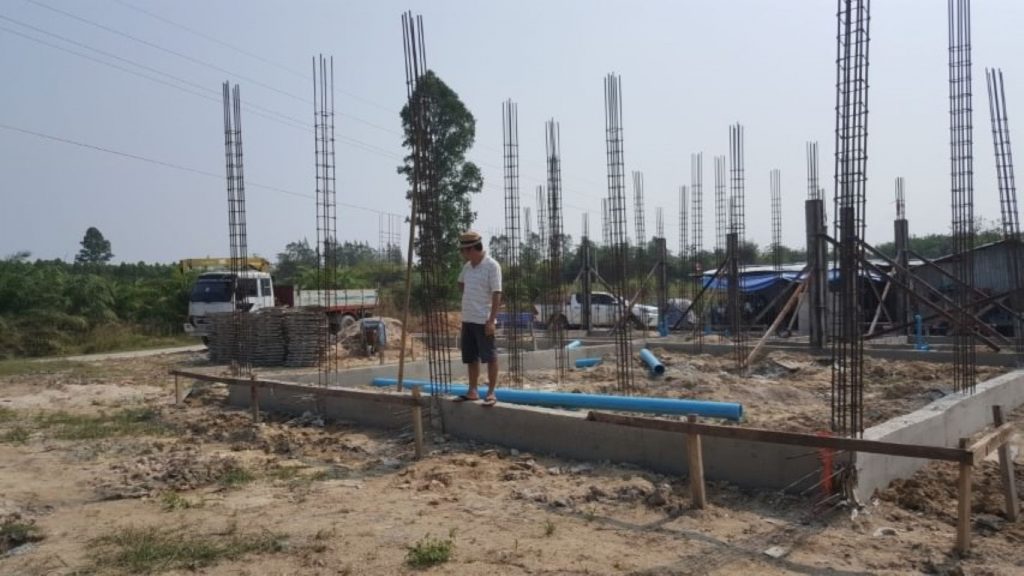
The steel cages for the Thai House Build were already in place. They had been previously tied to the ring beam and foundation plan before that foundation was cast. Now the builder needed to shutter up those vertical cages and cast concrete to form a series of re-enforced concrete uprights, or columns.
The column cage shutters were purpose built, and were different to the arrangements for the ring beam. Of course, our builder had those column shutters so there was no need for a trip to the builders’ merchants.
The column shuttering was put into place, and bolted together, around those vertical RC cages. The builders then used the concrete chairs the position the cage in the middle of the shutting, so that it would end up central to the column once poured.
After that, of course there was a final check to make sure the shutters were secure and no leaks. Just imagine if the shuttering was not fully secured, and the concrete was poured in. and the shutter popped open? Even if the shutter is not 100% secure, the concrete can ‘run out’. Either case will result in a mess all over the build, wasted concrete and wasted time while it is cleaned up.
A little later, and the concrete was made ready for the column pour. Although K.Pot had all the gear, for this job, it was placed into the shuttering by hand. Plastic buckets tipped into the top! This is fairly standard practice in Thailand.
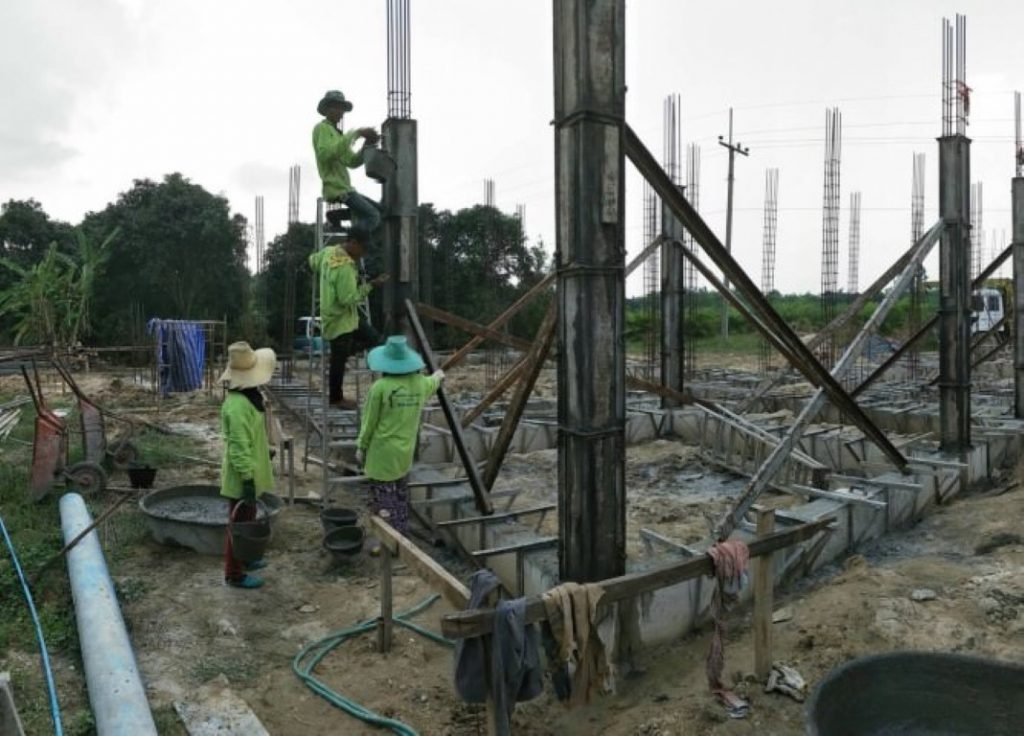
The larger columns, at the end of each zone were also poured this way.

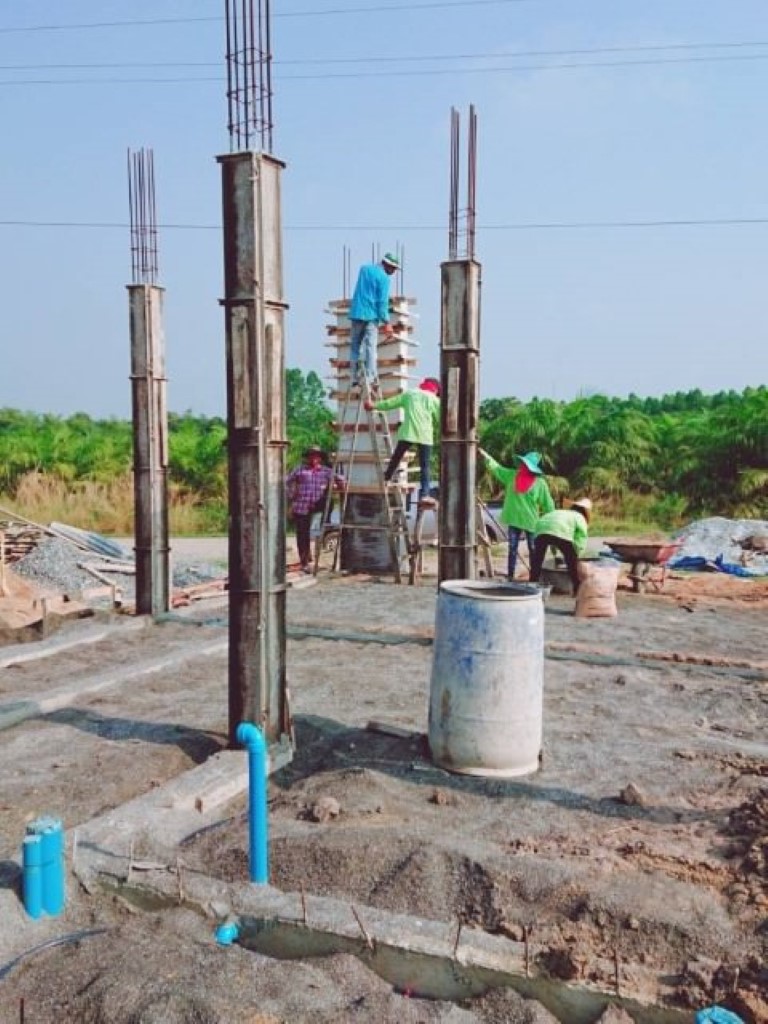
To ensure the concrete had flowed around that rebar ‘core’ and that correct settlement had occurred. K.Pot had the use of a vibrator. This powered device agitated the shutter, causing a more fluid consistency of for the concrete that had just been poured, encouraging it to get into every area. There is an important reason for this. Any air pockets, or voids in the concrete would weaken the structure.
As you can see, at the same time, the ground floor was being backfilled with fine aggregate ready to company and pour the floor slab too. This will be covered in another post, even though the two activities overlap.
You can also see that the plumbing is in place and this too will be the subject of another post.

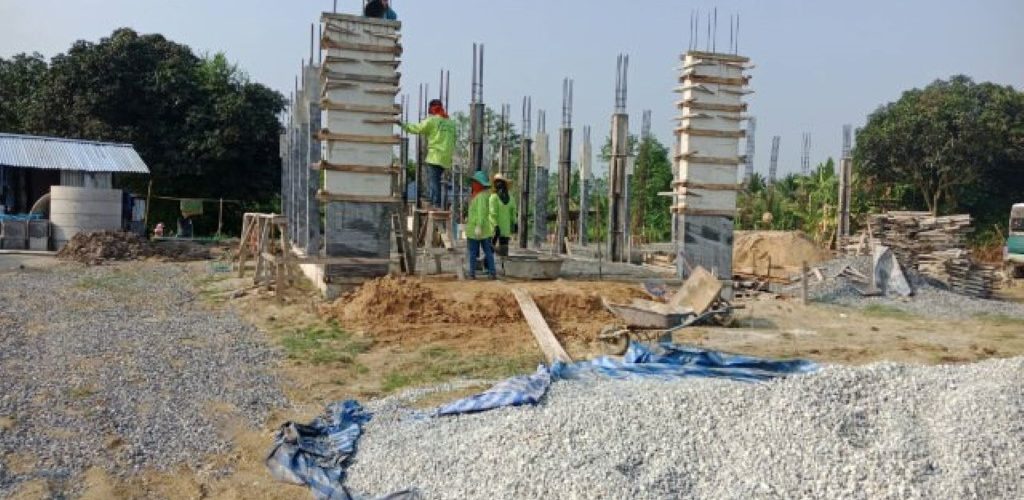
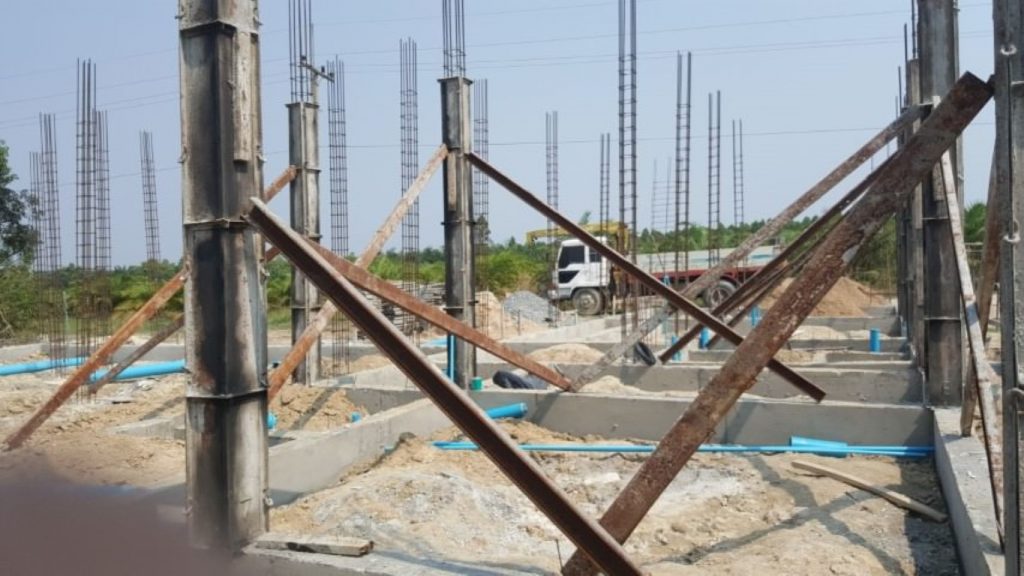
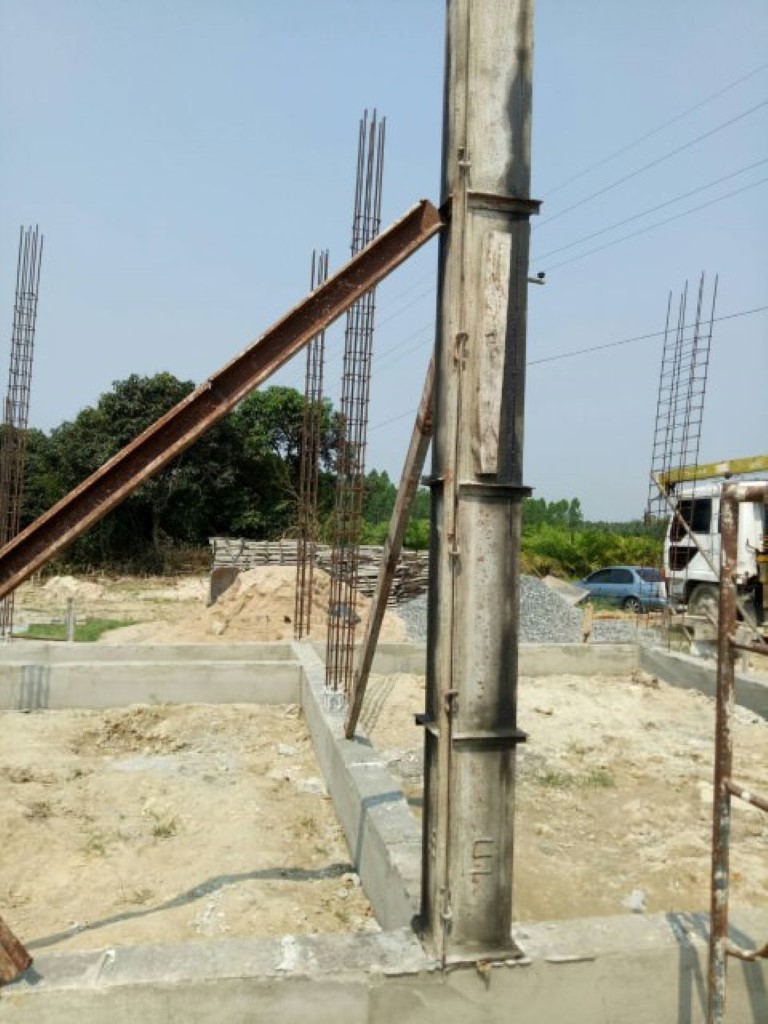
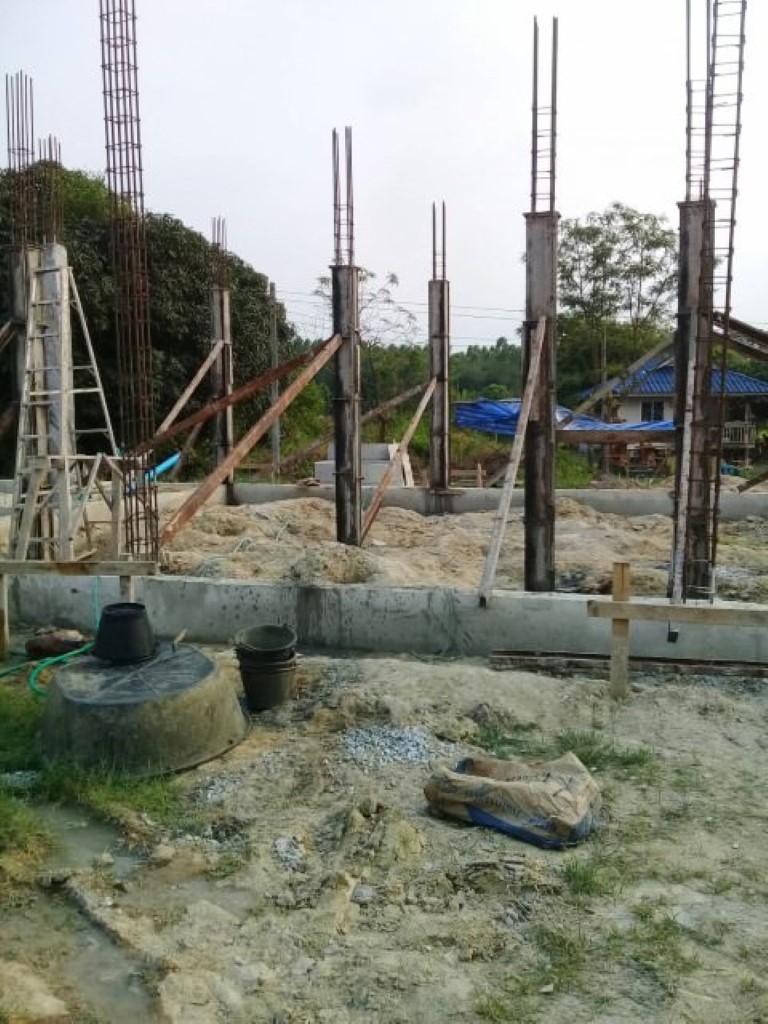
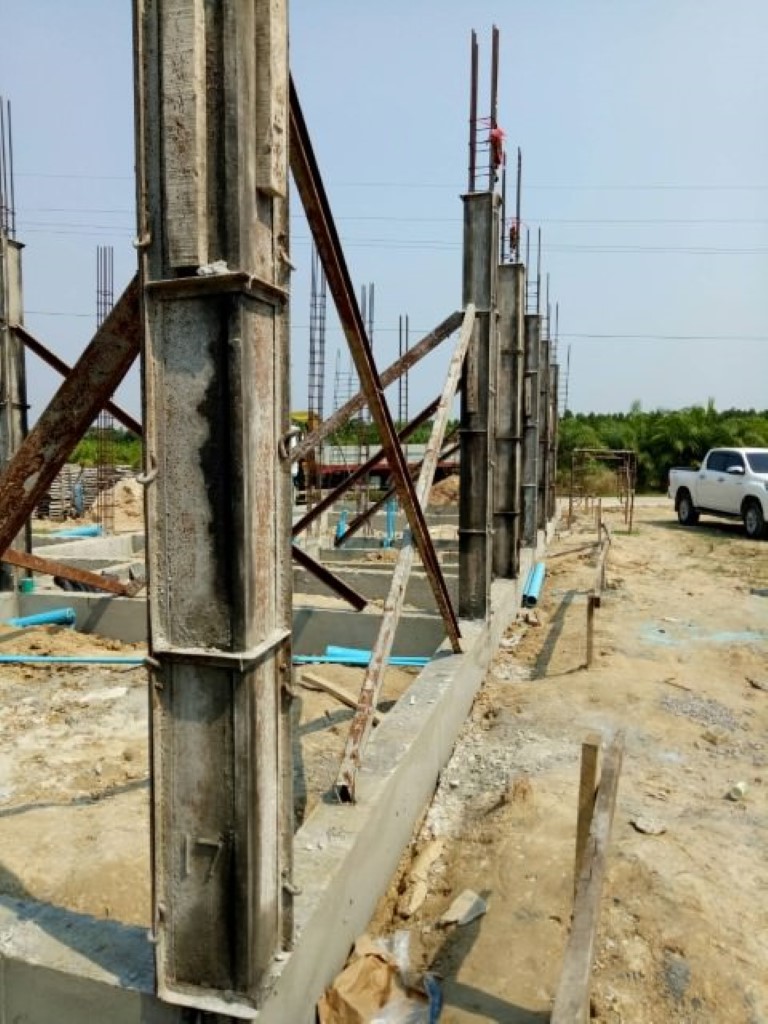
wow! great site!
you are covering it all, with good writing and pix.
speed up a bit plz
i wanna see the finishd houz pix
wow right back at you…I cannot even read your name, so thanks, friend for the message.
Yes… it’s slow because I am also slow and… I am involved in a lot of OTHER things, too!!
I will try to ‘speed up’, as you put it!
best, THB